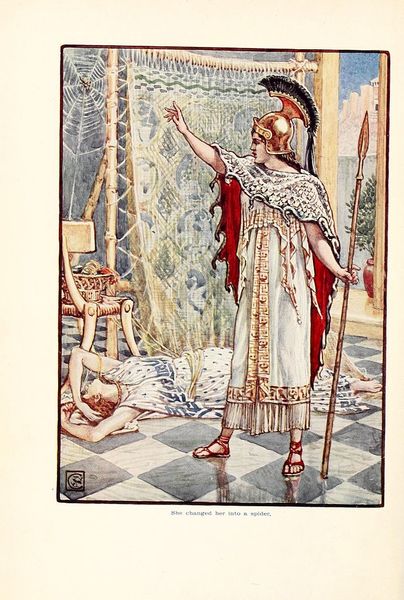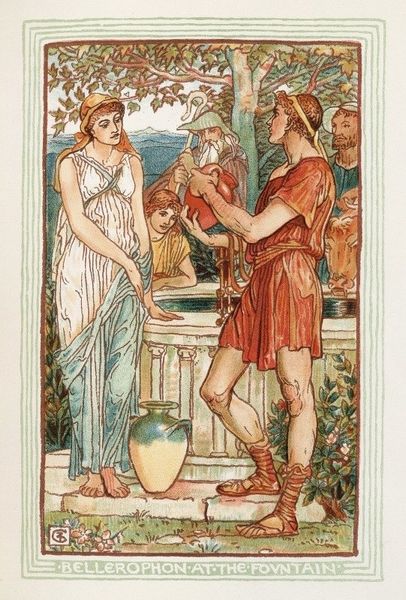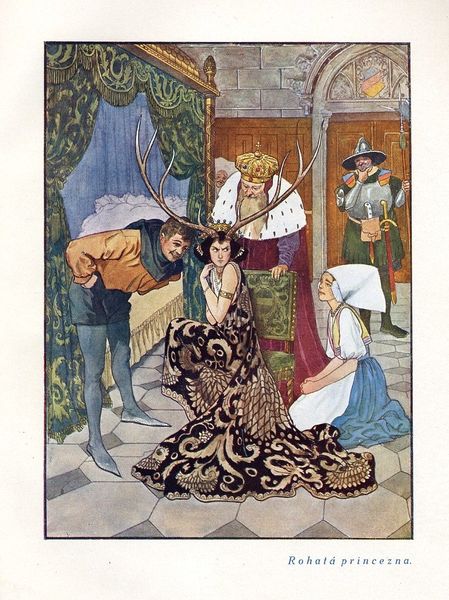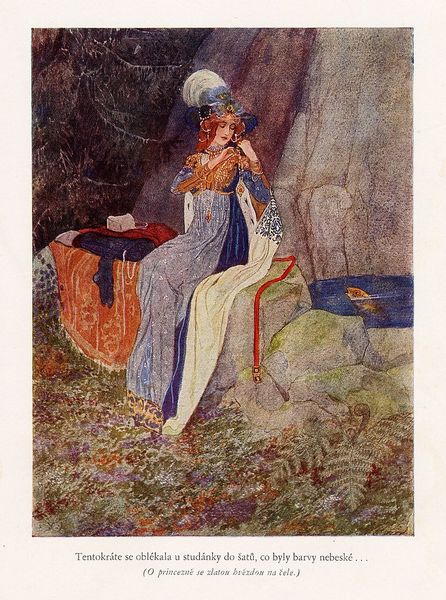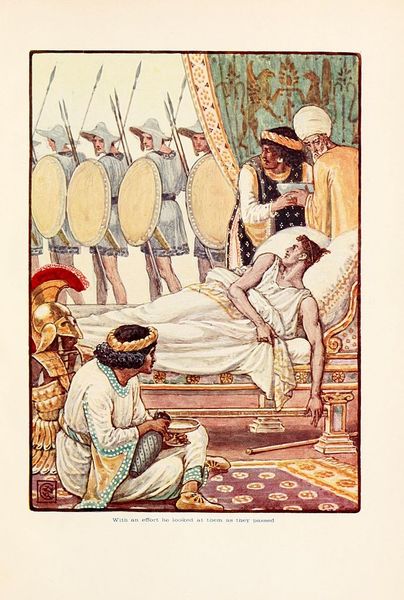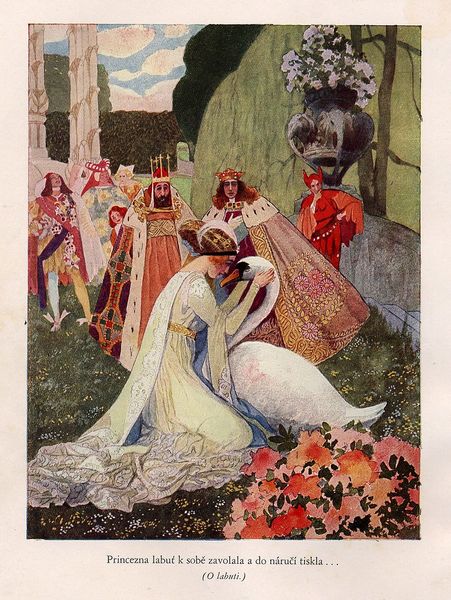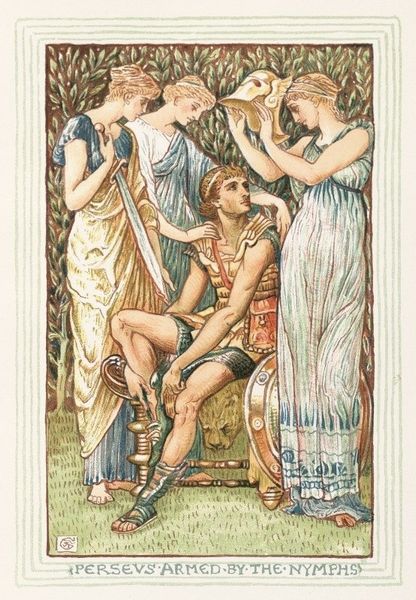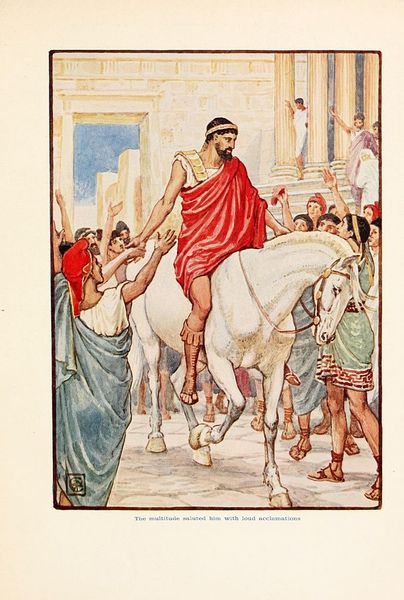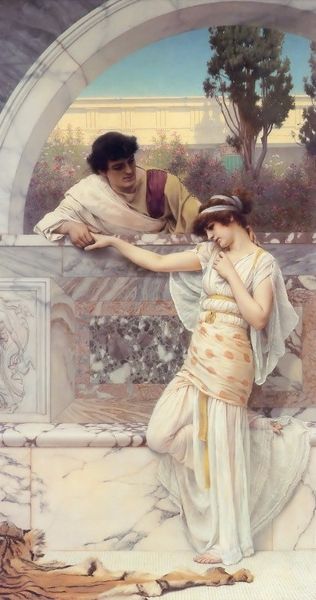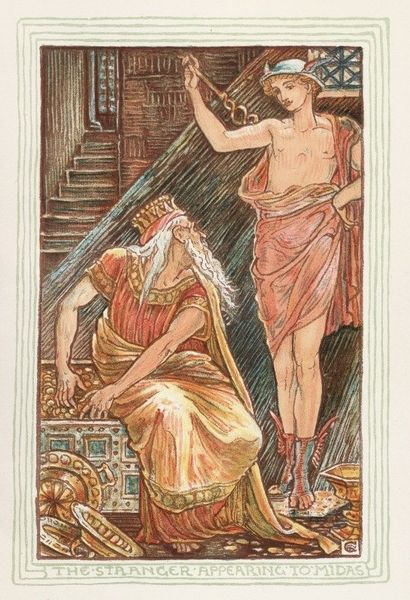
drawing, watercolor
#
drawing
#
water colours
#
narrative-art
#
figuration
#
watercolor
#
coloured pencil
#
romanticism
#
watercolour illustration
#
pre-raphaelites
#
academic-art
#
watercolor
Copyright: Public domain
Editor: Walter Crane's "Often she would stand upon the walls of Troy" rendered in watercolor and colored pencil... There's such a melancholy atmosphere. She seems very alone and trapped within that golden cage of armor and that tower. What do you make of it? Curator: The repetition of the gold--in her bracelets, helmet, the peacock fan—draws the eye, doesn't it? Gold as a symbol of wealth and status is obvious, but also consider its connection to the sun, to the divine, even to corruption. Does that elaborate peacock fan feel empowering or suffocating, especially considered alongside the weaponry? Editor: Suffocating, I think. The fan looks so heavy, almost like another piece of armor. So is Crane contrasting luxury with the grim reality of war? Curator: Perhaps. Note the averted gazes. She doesn't engage, not with us, not with the figures behind her. Consider also the shield. The griffin is a powerful mythological symbol: guardian, courage, strength, yet it lies unused. Is it a lament for lost power, the abandoning of traditional roles? Does she, with her back to them, signify the end of an era? Editor: So, we're seeing symbols of both power and helplessness. I see how they work together to create that atmosphere of trapped melancholy I sensed initially. Curator: And melancholy can be a powerful cultural memory in itself, can't it? It lingers in the artistic rendering. It's a potent emotional and intellectual concept when we see the classical world represented this way. Editor: It gives you so much to think about – beyond just a surface reading. Thank you! Curator: My pleasure, indeed symbols are meant to provoke us and engage with deep-seated psychological and cultural realities.
Comments
No comments
Be the first to comment and join the conversation on the ultimate creative platform.
